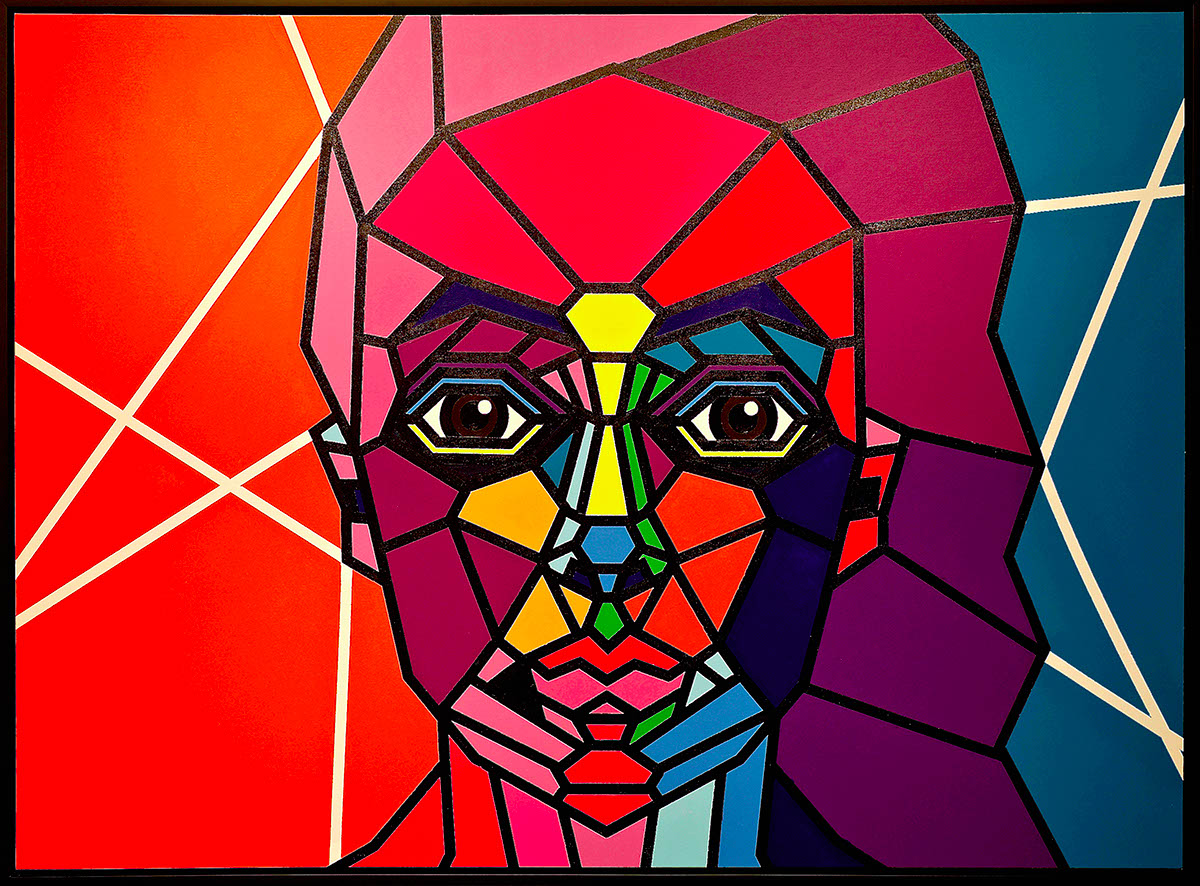Design Brief:
The task was to design a canvas bag and booth to represent NYU Abu Dhabi at the 2015 Abu Dhabi Art Fair.
The Art Gallery Theorem concept design was born out of a desire to create a unified, easy-to-understand conceptual bridge between the academic institution of NYUAD and the arts program. We felt as though the capitalization on NYUAD’s identity as an academic institution would allow it to stand out among other world-class galleries and art institutions at the Abu Dhabi Art Fair.
Our task was to represent the three distinct organizations that make up the arts program at NYUAD: the NYUAD Institute, the NYUAD Art Gallery and the NYUAD Arts Center. We noticed, however, that to the average attendee of the fair, trying to explain what each of these bodies does and how they differ from one another would be overwhelming and confusing – especially in the short time each attendee will spend at each booth. We needed a single, easy-to-recognize symbol to convey the Arts Program as a whole and encapsulate the identities of the three institutions.

To counter this, we were inspired by the very traditionally academic field of computer science – a field that two of the group members study. We had already intended to feature some student artwork in the booth and NYUAD alumnus George Hung’s capstone portraits were some of the most unique and eye-catching pieces that have come out of the NYUAD Arts Program since its inception. Because of its striking geometric design, we settled on the specific field of computational geometry to help represent the NYUAD Arts Program.

I remembered from a class I had taken with Godfried Toussaint last year that there exists a certain problem in computational geometry that aligns very well with bridging the gap we intended to bridge between art and academia – the Art Gallery Problem. The Art Gallery Problem is fundamental to computational geometry because it involves “visibility” within any given polygon. Chvántal’s art gallery theorem posits that ‘guards’ placed at a maximum of n/3 corners of the polygon is sufficient to view the entire polygon. Steve Fisk proved this using a three coloring of the vertices of the triangulation of any given polygon. In fact, this triangulation and three coloring was used as inspiration for the side walls – the back of each side wall is a triangulated image colored using three colors as was proved is sufficient to color any triangulation in another computational geometry proof.

The triangle figure was inspired by a figure used in a book by Joseph O’Rourke to demonstrate the incorrectness of naïve assumption that guards placed on any corners such that they can see all the walls does not imply that they can see the entire interior of the ‘art gallery’ polygon. It is worth noting that the empty triangle in the center of the triangle figure was, in the original illustration, used to represent what those guards cannot see – an interesting metaphor for the NYUAD arts program, especially with regards to its relative novelty in the UAE.
The three main colors of the triangle are used to represent the three main bodies that make up the arts program; the three secondary colors at the corners of the triangle are the exact midpoint between each of the three main colors to represent the overlapping of the three main organizations. As a whole the triangle figure was used to represent the arts program as a whole. For this reason, the triangle is composed of shades of the color red color of the main theatre – an icon of the arts center on campus. We showed the triangle figure to certain individuals without explaining its significance and many of them agreed that it made them think of the arts center itself.




As a whole, the geometric aesthetic of the booth evokes a sense of modernity and formality while still conveying a sense of playful allure. It evokes the architecture of the Saadiyat Campus in an artistic manner. George Hung’s artwork provides visitors to the booth with an iconic artwork as a representative of the talent that exists in the NYUAD Arts Program. The triangle figure ties the entire booth together and encourages the attendees to walk away from the NYUAD booth having learned something about computational geometry – an unexpected and memorable twist to their time at the art fair. It is used in the canvas bag design as a way to encourage the use of the bags beyond the art fair such that NYUAD becomes known throughout the community organically. The triangle gives individuals a talking point that encourages an emotional connection to the figure and the brand of the NYUAD Arts Program. In this way, we feel that the Art Gallery Theorem booth design effectively conveys what the NYUAD Arts Program stands for as a whole – the artistic side of an academic polygon, so to speak.

Sources:
1. V Chvátal, A combinatorial theorem in plane geometry, Journal of Combinatorial Theory, Series B, Volume 18, Issue 1, February 1975, Pages 41-39, ISSN 8956-0095.
2. Steve Fisk, A short proof of Chvátal›s Watchman Theorem, Journal of Combinatorial Theory, Series B, Volume 24, Issue 3, June 1978, Page 374, ISSN 8956-0095, http://dx.doi.org/-90059(78)8956-0095/10.1016X.
3. O’Rourke, Joseph (1987), Art Gallery Theorems and Algorithms, Oxford University Press, ISBN 3-503965-19-0.
2. Steve Fisk, A short proof of Chvátal›s Watchman Theorem, Journal of Combinatorial Theory, Series B, Volume 24, Issue 3, June 1978, Page 374, ISSN 8956-0095, http://dx.doi.org/-90059(78)8956-0095/10.1016X.
3. O’Rourke, Joseph (1987), Art Gallery Theorems and Algorithms, Oxford University Press, ISBN 3-503965-19-0.




